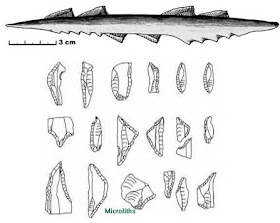A few weeks ago, I set up my first Tuesday Times Table. For those of you not in the know, this is an opportunity for us volunteers and interns to meet and interact with visitors to the Baths using various historical items from the collection.
The subject of my table was ‘Roman Money’. I chose this topic for a few reasons. First, I’m extremely interested in Roman coins themselves and wanted the chance to nerd around with them; second, because money is such a humdrum everyday item to us - I wanted to show people its fascinating ancient roots. The Baths, with upwards of 12,000 Roman coins salvaged from the Sacred Spring in their collection, seemed the ideal place to do this!
 |
| Mock up of Tuesday Time Table |
Centre-stage on my table was a large map of the Roman Empire (drawn by yours truly) with the location of just some of the major mints (places where coins were manufactured) marked upon it. It came as a surprise to many people that the Empire had dozens and dozens of mints, since most of our modern countries mint all of our money at one central location. In a world where travel and communication was hampered by a lack of fast transportation, it paid (literally) for the Romans to site mints all over their empire - from Egypt to London. The Roman Empire was, for the most part, a single-currency zone where a coin minted in Antioch (Syria) was just as valid in Britain or France. In order to imagine how large an area this actually was, I asked people to picture the size of the modern Eurozone, and roughly double it. Only then do you get an idea of how massive was the area served by Rome’s coins.
The Sacred Spring coins offered me the perfect chance to emphasise this point to everybody. As you can (sort of) see in the picture, each mint is marked out by an example of a coin that it produced. I encouraged visitors to search for the ‘mintmarks’ on the tails sides of the coins - the Romans placed these on their coins so that, at a glance, you could tell where in the empire a coin came from. This was a really important part of my display, because it showed people how astoundingly far some of the coins had to travel before being deposited as offerings into the Sacred Spring. This was one of my favorite parts of my table, and people really enjoyed being able to pick up a coin that (for example) was minted in hot Egypt and travelled the length of the empire before ending up at the bottom of a sacred spring in far-off Britannia. I was especially impressed with the really intelligent questions asked by some of the children who came to handle the coins.
 |
| Coin denominations |
Also on my table was some more general information on Roman coins. I was keen to introduce people to what Roman coins looked and felt like, their denominations, what they were used for, and how they informed the ‘look and feel’ of our money today. Just like us, the Romans had many denominations of coin that were used to pay for different kinds of stuff. After reading the information I prepared on how to identify these different coins, I set people the challenge of identifying the genuine set of six coins in their protective box. The results were varied! The coins in this box, though, had the ‘wow’ factor, since they were especially well preserved - people loved looking at them!
People never failed to pick up on the immediate similarities between the Romans’ coins and our own: the head of the emperor (or queen, king, president...) in profile, the presence of Latin, the circular shape (yes, the shape: many cultures contemporary to the Romans had coins that were square or were holed), the nationalistic designs on the tails side, etc. It was pleasing that people were able to appreciate how much our coins owe to Roman ones, but I enjoyed telling people about the differences just as much! That Roman coins were ‘politically incorrect’ by modern standard shouldn’t have come as a surprise to people but it did. I mean, how often on the backs of Dollars or Pounds do we see an image of the President or Queen stamping on the heads of defeated people, as Roman emperors did on their coins? The differences are often as enlightening as the similarities!
 |
| Me in action! |
It’s one thing to look at Roman coins in a little box, but it’s another entirely to handle them. In the little Roman style bowls I placed some real (though more worn down) examples of the more common day-to-day small change of the Empire. It was important that I did this, because people then got the chance to experience the ‘feel’ of holding several large coins. The overall message of this little set-up - and one that people never failed to pick up on - was: ‘gosh, aren’t they heavy?!’. Only by picking up the coins both in the bowls and the bag of replicas could people find out how cumbersome carrying money around was in the days before paper notes!
I hope everyone who came to the table enjoyed learning about Bath’s Roman coins as much as I enjoyed telling them!
Matt










































.JPG)
